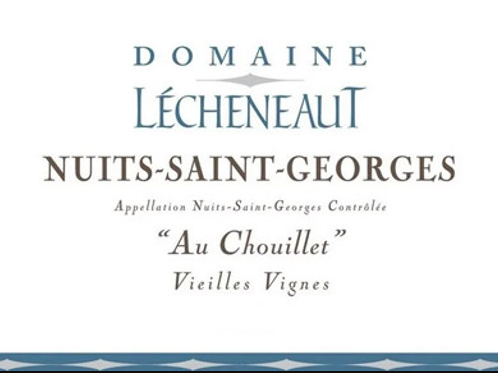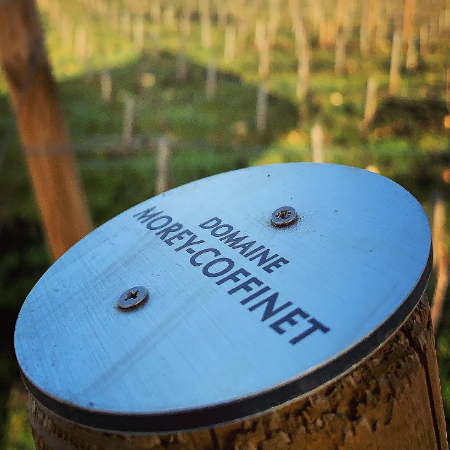2017 Burgundy En Primeur – The advent of a modern classic?
As the 2017 vintage is due to be released in January, our attentions turn to expressing the qualities of this vintage, penning our vintage report and tasting notes. Five members of the Atlas team spent a week in Burgundy, tasting at 20 properties across the Côte d’Or this autumn. A special set of circumstances have delivered a fascinating array of wines, provided the growers devoted sufficient attention to their vines.
The first point I would stress is a near constant refrain of mine, namely that Burgundy vintages and generalisations seldom go hand in hand. That statement is more apt in the 2017 vintage than in the previous few vintages, so diverse were the results, grower by grower. Shortly after harvest, Burgundy critic Clive Coates MW commented that 2017 continued Burgundy’s ‘recent run of high-quality vintages and looks like being even better than 2016 and 2015.’ Perhaps 2017 has not achieved the same level of all-round consistency that either of those vintages attained, but where there are high points, they compare to those vintages with ease.
One topic that dominated many conversations this vintage concerned the vine’s natural tendency to overcompensate and overproduce the year after yields were decimated by frost, as had been the case in 2016. Less quality-conscious growers had the opportunity to fill their cellars, so generous was 2017, but this would be at the loss of quality. One or two growers commented that they had heard of vines giving a yield as high as 100 hectolitres per hectare – way over an appellation contrôlée limit. There was a need to limit yield and curb the vine’s attempt to overproduce; 2017 still necessitated plenty of efforts in the vineyard to achieve high quality. The danger is that by pruning early growers are setting their maximum yield. If frost occurs thereafter, your yield may be seriously lowered. As ever, the vigneron makes numerous decisions throughout the growing season without the knowledge of how it will all transpire. In 2017, the quality-conscious grower was well-rewarded, but brave decisions had to be taken along the route. Christophe Perrot-Minot expressed this as succinctly as anyone when he commented that he had made virtually the same quantity of 2017 as he had 2016, having taken the decision to dramatically limit yield to preserve quality.
While the concerns over frost that dominated the early stages of the 2016 vintage still cast a shadow in early 2017, the broader point is that the region seems to be experiencing milder winters – or certainly far milder early season conditions – which advance the vine’s maturity. Such early growth does expose the vine to risk of frost damage and its potential to seriously reduce the size of the crop. These early season fears, and the limited measures employed to counter the frost risk, are becoming a more significant part of the Burgundian way of life. Fortunately, in 2017 the region navigated its way past the frost risk unscathed.
At Clos des Lambrays, regisseur Boris Champy commented that every grower in Morey-St.-Denis was faced with low yields between 2009 and 2015, and that there had been a complete volte-face with the more generous yields in the 2016, 2017 and 2018 vintages. Monsieur Champy maintained that the principal concern today, therefore, is yield management – certainly not a thought anyone would have had five years ago. Adaptability is a necessity for the Burgundian vigneron, perhaps more so than ever before.
Post-April, the year was characterised by a normal May, a hot and sunny June and largely fine conditions in July. August followed suit, being largely warm and dry. Despite these hot summer conditions, there was a noticeable diurnal shift in temperatures, meaning that cool nights served to retain fine, bright acidities in the resultant wines. More on that later, but for the first time in a while, growers had something approaching “normal” quantity. Indeed, it was the largest crop since 2009; hail and frost had severely affected pockets of Burgundy in 2016 and 2015, so there was a sense of relief among growers. In 2017, for the first time in a long time, Burgundy had fared better than many other French regions, in which harvests were considered to be very small on account of difficult climatic conditions. In Burgundy, disrupted flowering caused by high temperatures did cause restricted yields in some areas, as cited by Jean-Pierre Latour of Domaine Latour-Giraud. That said, this does not seem to be a factor outside of Puligny-Montrachet. Likewise, there was some isolated hail in Morey-St.-Denis but with no dramatic influence.
On account of hot summer conditions, the harvest started early, in some instances in the first days of September. While September was significantly cooler, and fairly wet too, the fruit was in good condition, so there was not a mad scramble to harvest for fear of rot. But this did influence some growers’ decisions on timing the harvest of Pinot Noir, with Jeremy Seysses of Domaine Dujac commenting that ‘if we could have counted on good weather, I’d have waited.’ Others, including Domaine Ponsot, which is always among the last to harvest, were confident enough to wait until the 18th September to bring in their Pinot Noir. Sebastien Cathiard of Domaine Sylvain Cathiard was not far ahead of them, harvesting around the 14th September.
Given all the decisions taken in the vineyard and cellar, it is impossible to generalise about the 2017 vintage – the complex chain of decisions has influenced both quality and style. Jean-Pierre Latour of Domaine Latour-Giraud remarked that at first the whites resembled 2015, but as they developed in barrel their poise and freshness reasserted itself in a way that was lacking in 2015. Certainly, our tastings at a number of domaines suggested that the 2017 whites showed ample ripe fruit offset by good freshness and bright acidities. This comment would certainly apply to domaines Patrick Javillier and Latour-Giraud in Meursault. When we came to taste at Darviot-Perrin in Monthèlie, an estate which benefits from remarkably old vines in the villages of Chassagne-Montrachet and Meursault, it tasted like a different vintage altogether, one with much more tension and precision. This underlines the remarkable leap forward in quality at this address in recent years. Frankly, I cannot recall a finer line up at Darviot. It is also startling to consider the consistency demonstrated by growers such as Olivier Lamy in St. Aubin over the last five or so vintages, all of which have been shaped by very different vintage conditions. Yes, the style adjusts to heed the vintage conditions, but the quality remains remarkably high.
When it comes to the reds, the value of attentive vineyard management spoke volumes. I know this sounds simplistic, but fine wine is made in the vineyard. In 2017, if yields were not controlled, some of the resultant wines lacked concentration. Against this backdrop, we are all the more impressed by the wines of Christophe Perrot-Minot in Morey St. Denis, the Lécheneaut brothers in Nuit-St.Georges and Sebastien Cathiard in Vosne-Romanée. Each of these domaines delivered an array of wines with fine concentration, slightly suppler than in 2016, yet not lacking in structure and freshness. As we travelled around, we heard other merchants ask the routine question, ‘What other vintage does 2017 resemble?’ To be honest, this always strikes us as a fairly banal question, but at its best, 2017 is so individual; as it has the generosity and supple attack of a warmer vintage yet the refinement and freshness of a cooler, classic year. As Boris Champy at Clos des Lambrays termed it, ‘perhaps we should call it a modern classic vintage!’. A mid-September harvest is early for Burgundy and normally results in a style marked by the heat of the vintage… not always noticeably so in 2017. Having read some of the meteorological data before our visit, I had expected to taste a range of relatively atypical wines, but this is not the case. Even with the domaines that tend to harvest on the late side, there is no real sense of sur-maturité. This is a fascinating feature of 2017.
It is also worth highlighting that the quality of wines now being produced by a number of the long-established négociants/merchants of Burgundy has risen significantly in recent years. There has always been some confusion on what is essentially a domaine wine (i.e. produced from vineyards owned by the estate) and what is négociant (i.e. produced from leased vineyards or purchased fruit), but that distinction is virtually meaningless when the négociant actively manages the vineyard. Walking around the enormous barrel cellar at Louis Jadot recently, it is impossible not to pick up on the number of barrels that are marked ‘domaine’ under the various Jadot companies. Without dwelling on the distinction, the difference in quality between origins is not perceptible; the quality is of an equal high standard across their production. An early tasting at Drouhin is not only useful in providing a comprehensive overview of the vintage, before our tasting week begins in earnest, but it also reveals just how finely expressed so many of their wines actually are. Equally, Faiveley recently opened beautifully renovated cellars, on which no expense has been spared, all with the aim of elevating their quality. Witnessing such investment amongst these leading houses, and the accompanying increase in quality, is positive for Burgundy and its reputation globally. It is great to see these illustrious names having ratchetted up their quality.
I think the consumer will be very surprised by certain wines in this vintage. I have to stress ‘certain wines’ as the representation of the vintage does vary from address to address as mentioned above. I am very pleased with how the wines from the domaines we represent showed – they far exceeded my expectation. In order to consider broadening our offering, I will add that every year we taste at some domaines from which we have not purchased before. Very few convinced us in 2017, which really underlines the nature of this vintage. Given the prices that some of these domaines command, the quality needs to match up for us to feel comfortable in offering. Sadly, this was not always the case. With the range we have selected, you can look forward to ripe-natured wines with fine poise, and yet wines that are likely to be easier to appreciate in their youth. Some growers commented that they did not think that their Pinot Noir would necessarily close up and become inexpressive in their adolescent phase (as is normally the case with red Burgundy in a classic vintage). This remains to be seen but there is no denying the appeal of the 2017s. To reiterate, a special set of circumstances have delivered a fascinating and appealing array of wines, provided the growers devoted sufficient attention to their vines.



